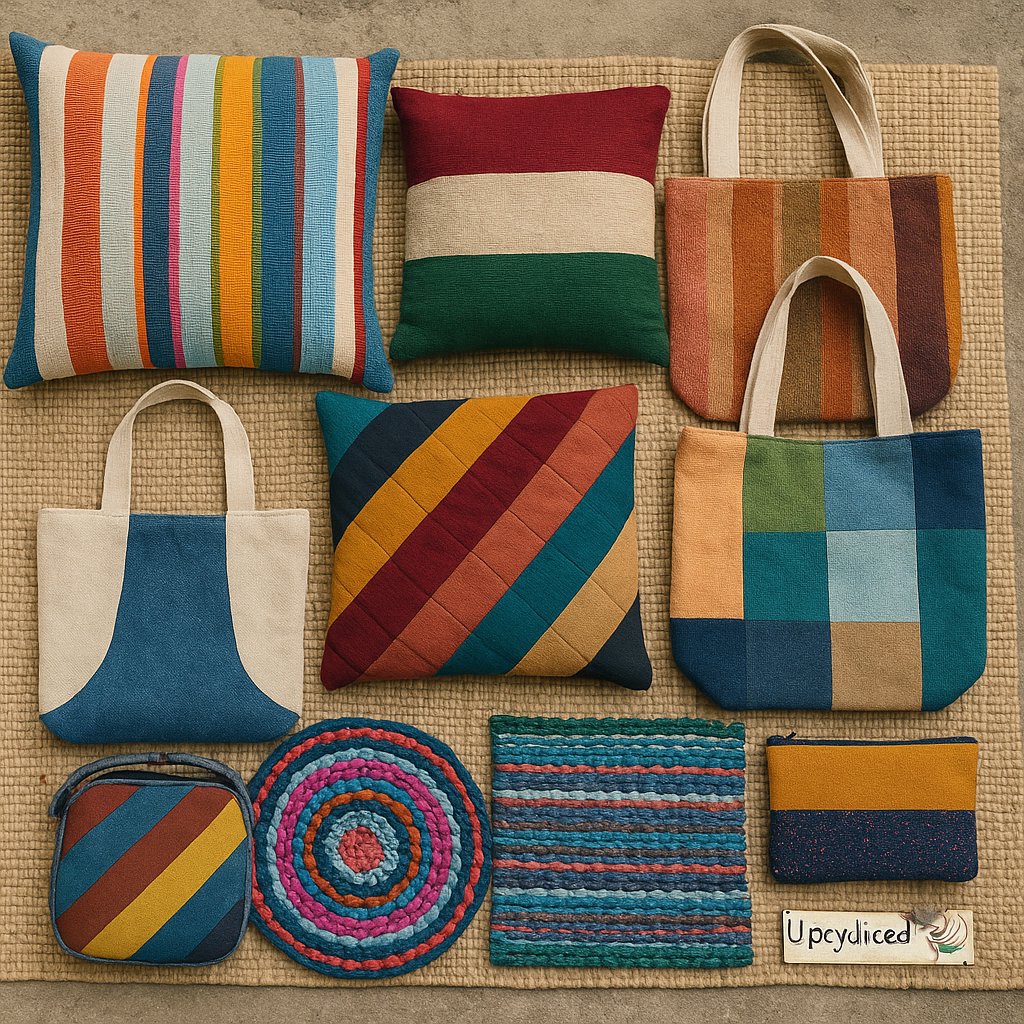
N.B. This photo is not real, it is an AI-generated one.
The Problem and Motivation Behind
“College students wear a dress 10–15 times, then they get bored. They throw it, and it ends up in landfills … if our clothes are going to landfills—then we are part of the problem. We decided we have to do something for our environment.” — Devika.
Devika (20-year-old) and her team grew up in Karnataka, where large landfills are a common sight. They noticed that a huge number of clothes were being thrown away, causing pollution and harming the environment. Many people, especially students, discard clothes after wearing them just a few times.
For Devika and her team, this throwaway culture sparked an idea—they saw it as a chance to earn a living. Instead of viewing the clothes as waste, they saw them as a valuable resource that could be upcycled[1] into new products. Their aim was not only to reduce waste and protect the environment but also to create a sustainable source of income for themselves.
The Innovative Solution
“Almost 99% of clothes are made of fabric, and people throw them away. We thought—why not take those clothes and upcycle them into something useful? …“We are making cushion covers, mats, bed bags, purses, handbags—all from upcycled clothes.” — Devika
When Devika and her team joined the Youth Innovation and Action Lab (YIAL), they chose to address the problem of clothes pollution through upcycling. They found that the average life span of a garment is roughly three years, and thus, textile industry generates a huge amount of waste. Instead of letting clothes end up in landfills, they developed a solution to transform discarded fabric into everyday essentials. So far, they successfully produced and sold over 200 handcrafted upcycled items—such as doormats, bags, cushion covers, purses, and handbags—made entirely from discarded clothes.
Their aim was not only reducing waste but also introducing more people to the idea of sustainable consumption and upcycling culture. Therefore, they set up stalls to promote their products, and even did door to door visits to 100 houses and 20 colleges to raise awareness about upcycling and encourage clothing donations. At the end, they managed to sell most of their products, and earned around 2,000 Rupees (about $23) in profit. While the profit may seem modest, it was proof that their idea worked. It showed that their solution had real potential, and encouraged them to keep improving their products and expanding their sales.
Lessons Learned and Addressing Challenges
“At the start, people made fun of me. They said, what will you do? But now, they are shocked. I’m paying my own education fees. They respect it now.” — Devika
The Youth Innovation and Action Lab (YIAL) provided Devika and her team with training and mentorship support that helped them in developing their solution. They learned about entrepreneurship, sustainability, and how to build and manage a business.
However, the journey was far from easy. Selling upcycled products in a market driven by mass production meant facing constant price comparisons and intense bargaining. Also, setting up stalls required permissions, logistical effort, and patient explanation to every potential customer.
Reflecting on their experience, Devika identified two lessons learned:
- Building community support takes time and consistent engagement: Devika and her team found that while many people appreciated the idea of upcycling, not everyone followed through with action. Despite showing interest, most community members did not donate clothes as promised. This taught the team that raising awareness is just the first step—turning support into participation requires ongoing effort, patience, and creative outreach.
- Customers need to be educated to value handmade, upcycled products: One of the biggest challenges was helping customers understand the value of their work. Many people expected low prices and didn’t recognise the effort involved in creating upcycled items by hand. They learned how important to educate customers not just about the product, but about the process, the environmental benefits, and the social impact behind it. “In the market, if we price a pouch at 100 rupees, we end up selling it for 60, sometimes even 20. People bargain a lot and don’t understand the effort behind it,” Devika added.
Next Steps and Future Aspirations
“My dream is to make Karnataka landfill-free. I want this concept to reach the whole state, then the whole country. I want to grow more. I want to give jobs to people who are struggling.” — Devika
Devika envisions scaling the initiative, doubling their product range, and reaching more cities. Her goal is to raise awareness on a larger scale, turn upcycling into a mainstream movement, and eventually create more jobs for youth—especially women—from disadvantaged communities. They plan to invest in better tools, expand their design skills, and build a stronger market presence.
[1] Recycling and upcycling are both ways to reuse materials and reduce waste, but they work in different ways. Recycling is breaking down waste materials into raw materials to make new products. This often involves melting, shredding, or chemically processing the original item. While Upcycling is reusing old items or materials without breaking them down, and turning them into something of higher value or quality. This usually involve creative and hands-on work, like sewing, painting, or assembling.